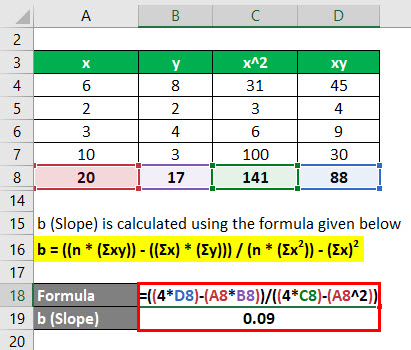
- Calculate standard error of the regression slope how to#
- Calculate standard error of the regression slope code#
When I extracted the r-squared I used the lapply function, like this: When I apply summary(fit) I get 9 regression outputs, including all the summary statistics like residuals, coefficients (estimate, std error, t-value, p-value) as well as r-squared and adj r-squared.

When I print the fit object I get the intercept (alpha) and the slope (beta) of each X-value, for each dependent variable, ie 9 columns with alpha, slope X1, slope X2 and slope X3. Don’t hesitate to let me know in the comments section, in case you have further questions.
Calculate standard error of the regression slope how to#
In summary: At this point you should know how to return linear regression stats such as standard errors or p-values in R programming. Extract Regression Coefficients of Linear Model in R.
Calculate standard error of the regression slope code#
In the video, I explain the R code of this tutorial in a live session.īesides the video, you may have a look at the other tutorials of this homepage: Note that this p-value is basically zero in this example.ĭo you want to learn more about linear regression analysis? Then you may have a look at the following video of my YouTube channel. Pf(mod_summary$fstatistic, # Applying pf() function Pf (mod_summary$fstatistic, # Applying pf() function Let’s fit a linear regression model based on these data in R: The variable y is our target variable and the variables x1-圆 are the predictors. # 6 1.74 1.68 1.61 -0.63 -3.16 -0.21 0.31Īs you can see based on the previous RStudio console output, our example data is a data frame containing seven columns. Head(data) # Showing head of example data Set.seed(1234421234) # Drawing randomly distributed data Seed ( 1234421234 ) # Drawing randomly distributed data


 0 kommentar(er)
0 kommentar(er)
